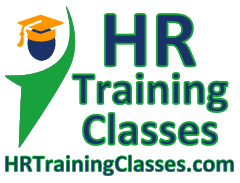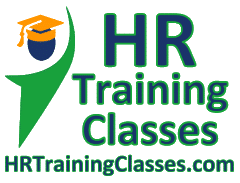Instructor: Elga Lejarza, aPHR, PHR, SHRM-CP, SPHR, GPHR, SHRM-SCP
Continuing Education Credits:
- HRCI – 14 HR(General) Credits
- SHRM – 14 PDC’s
Schedule: 10:00 AM – 6:00 PM Eastern Time on Both Days (Detailed Agenda Below)
During these uncertain times, many of our businesses are facing particularly tough challenges with both a decreasing talented workforce and a constant evolution of our business strategy and technology. These two trends combine to create critical challenges to ensure business continuity. If not prepared, owners can lose everything they worked hard for.
Most business owners are so focused on the success of their day-to-day business, that they do not implement a long-term strategy until an unforeseen event occurs, such as an illness or death of a CEO or when a person in a key position gives notice.
By enrolling in this course, you will learn the importance of Succession Planning to your organization, you will obtain the knowledge to conduct this critical business activity and how to become the person to potentially save the company.
Succession Planning is an ongoing process of strengthening a company’s current and future workforce by developing and reinforcing the skills, knowledge, and talents needed for business continuity. During this course you will learn the following:
- How Succession Planning carefully defines management, leadership, and other critical positions which ensure continuity for the business
- How Succession Planning is an organizational process that develops the talents and competencies of their employees
- How Succession Planning becomes an active goal of identifying and developing multiple potential candidates for specific leadership positions well before these positions become vacant
- How Succession Planning creates and constantly develops an organization-wide talent pool and changes the company culture to a learning culture
- How Succession Planning will manage and navigate inevitable organizational transitions more smoothly
Be the person who helps bring a great Succession Plan process to your company, so you can be responsible for increasing employee retention, increasing your company’s profits, and creating stability amongst your co-workers.
This course uses a combination of interactive training techniques such as lectures, case studies, and group activities. Additionally, this course presents best practices in the areas of career development and Succession Planning while inviting participants to share their own experiences.
Be the person to learn the following about Succession Planning:
- The Purpose
- The Benefits
- The Risks
- The Myths
- The Objectives
- The Process
Remember, if you are new to Succession Planning, need to refresh your knowledge on your skills, or need to create a process that ensures business continuity, this course is for you.
This is a perfect time for business leaders to take steps to implement a strategy for Succession Planning. Your customers, vendors, employees, and your family will thank you.
AGENDA:
Introduction
Overall Understanding
Definition
Types & Stages
Defined Departure
Ongoing
Emergency or Interim
- SWOT
- PESTEL
- Porter’s 5 Forces
Terminology
- Bench Strength
- Career Management
- Career Planning
- Competencies
- Dual Career Ladder
- Employee Development
- Job Design/Redesign
- Key Employee
- Key Position
- Recruitment
- Replacement Planning
- Talent Management
- Training
- Workplace Planning
Stories
- McDonald’s
- Coca-Cola
- Disney
Function
The Purpose
- New Opportunities
- Retirement
- Death
- Retention
- Diversity
- Balance of Power
- Rapid Organizational Growth
The Benefits
- Resiliency Through Change
- Uncover Needs & GAPS
- Promote Training & Development
- Institutional Knowledge Transfer
- Culture of Retention
- Brand Preservation
The Risks
- Business Financial Risk
- Loss of Knowledge & Experience
- Difficulty of Obtaining Assistance
- Negative Emotional & Cultural Impact
- Clients Standards Not Met
- Great People Leave
- Hiring & Promoting Mistakes
- Missed Opportunities
- Negative Recruiting
The Myths
- It Is Only For Executive Levels
- It is a One-Size-Fits-All Model
- All Executives Carry the Same Skills
- It Should be a Secret
- Rely only On One Person
- It is only HR’s Responsibility
- When Done it is Complete
The Objectives
- Identify
- Provide
- Engage
- Build
- Improve
- Complete
- Evaluate/Reevaluate
Communicate The Objectives
- Determine the Method
- Express the Benefits
- Work Transparency
Don’t Communicate The Objectives
- Labeling
- False Promises
The People
Responsibility
- C-Suite
- Board of Directors
- HR
- Everyone, Especially You
Timeline
- When to Start
Beginning Strategy
- Organizational Structure/Buy-In
- Succession Plan Policy
- Champions of Implementation
- Planning of Program
- Capacity of Comparison
- Job Description Updates
- Alignment & Transition
- Tools & Technology
Small/Family Business
Large Business
The Process
Organizational Chart
- Structure
- Hierarchy
- Management
- Communication
- Design
- Functional
- Divisional
- Matrix
- Team
- Networking
- Accountability
- Span of Control
- Chain in Command
- Centralize vs Decentralize
Identify Key Position/Risk
Identify Key Position Skills
Assess Internal Talent
- Manual
- DISC
- MBTI
- Gallup Clifton
- Saville
- EQ-i 2.0
- 360
Review Internal Talent
- Internal Worksheet
- 9 box grid
- 9 box grid exercise
- 16 box grid
- Talent Management Software
Development of Internal Talent
- Assessment Centers
- Coaching
- Mentoring
- Apprenticeship
- IDP’s
- Cross-Training
- Job Rotating
- “Stretch” Assignments
- Job Enlargement
- Job Enrichment
- Job Shadowing
- E-Learning/LMS
- PIP
- Challenges with Developing Professional
- Dealing with change
- Small Talent Pool
- Disengaged Learners
- Delivering Consistent Training
- Tracking Skills
- Instilling Conflict Management
- Qualifying Training Effectiveness
- Improving Training Effectiveness
- Demonstrating Value to Leadership
- Adapting Training to New Generations
Plan for Internal & External Recruiting
- Recruiting Strategy
- Internal Recruiting
- Job Posting
- Job Bidding
- Job Nominations
- Skill Tracking System
- Promotions
- Demotions
- Transfers
- Retired “Boomerang” Employees
- Employee Referrals
- Guest/Vendor Referrals
Internal Recruiting Benefits
Planning when internal recruiting fails
- Interim Positions
External recruiting
- Internet
- Social Media
- Former employees
- Previous Applicants
- Labor unions
- Trade & Professional Association
- Walk-Ins
- Educational Recruiting
- Third-Party Sources
- Temporary Agencies
- State Employment Agency
- Private Employment Agency
- Executive Search Firm
- Outplacement Firms
- School to Work Programs
- Minority Recruitment
- Non-Traditional Labor Pools
External recruiting benefits
Measuring Results
Potential Issues in a program
Desired Elements in a program
Identify Legal & Diversity Issues
Keeping It Current

